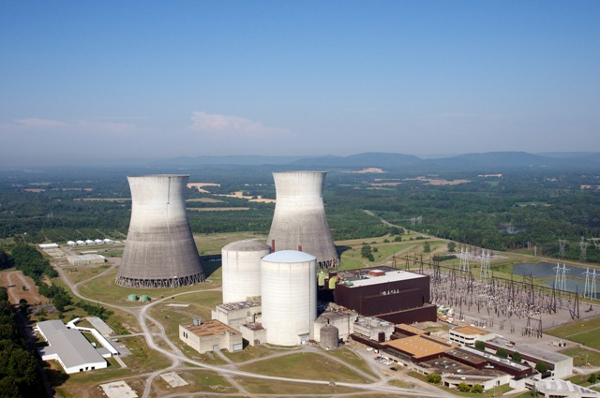NEW DELHI : As part of India’s strategy to expand its footprint in Africa, the National Democratic Alliance (NDA) government is exploring supply of small nuclear power reactors to the electricity-starved countries.
Interestingly, India’s civilian nuclear power programme has caught the fancy of African countries because climate change has impacted their conventional hydropower generation capacity, which was primarily dependent on the Nile, the Niger, the Congo and the Zambezi river systems.
While hydropower generation has witnessed a decline leading to lower supply of electricity in African nations, India’s pressurized heavy water reactor’s (PHWR’s) unit size are well-suited to meet their small demand load.
“Due to weather anomalies, the African countries can’t depend on hydropower generation to meet their growing electricity demand. Given that their demand load is small, our pressurized heavy water reactors of 220MW unit size fits the bill. The African countries are interested in these nuclear power reactors. These are initial feelers,” said a senior Indian government official, requesting anonymity.
The Indian government’s move comes at a time when China has made major forays into Africa since 2004-05. In recent years, China has also tried to co-opt African countries into its ambitious Belt and Road Initiative (BRI), a programme to invest billions of dollars in infrastructure projects, including railways, ports and power grids, across Asia, Africa and Europe.
New Delhi is opposed to the BRI, which seeks to invest about $8 trillion in infrastructure projects across Asia, Europe and Africa, as it says the initiative lures countries into debt traps, and does not respect sovereignty or address environmental concerns.
India’s strategy is to negate the growing influence of strategic rival China in the region. New Delhi has also extended a $10-billion concessional line of credit (LOC) for the African continent.
Of India’s fleet of 22 commercial nuclear power reactors with an installed capacity of 6,780 megawatts (MW), which are run by state-run Nuclear Power Corp. of India Ltd, or NPCIL, there are 14 units of 220MW PHWRs, making it one of the largest fleets of such reactors.
“Most of our older plants have the 220MW PHWR units. NPCIL has amply demonstrated its expertise in the design, construction, and operation of PHWRs with unprecedented levels of efficiency and safety. Our PHWRs are also economical, as compared to others, as they are one-and-a-half to two times expensive than our reactors. We are exploring African countries to help meet their demand,” the official added.
A senior NPCIL executive, who also requested anonymity, confirmed the interest by African countries.
New Delhi’s support to the freedom movements in many African countries, had earned it considerable political clout in the region, but its popularity started dwindling since the 1990s. However, since the middle of the last decade, India has made efforts to remedy that—reworking its ties with Africa through high-level summits and frequent top-level visits.
Queries emailed to the spokespersons of India’s department of atomic energy, NPCIL, and the prime minister’s office on 30 October remained unanswered.
Source: LM
Image Courtesy:Canadian Manufacturing
You may also like
-
Trade Connect E-platform For Exports Is Single Window, Fast, Accessible And Transformational: Shri Piyush Goyal
-
Dot Simplifies Approval Processes For Telecom Licenses And Wireless Equipment
-
Coal Production and Supply Trends on Positive Trajectory
-
Union Minister To Release Booklets On Promotion Of Indigenous Species & Conservation Of States Fishes
-
2nd India-Japan Finance Dialogue held in Tokyo on 6th September, 2024
